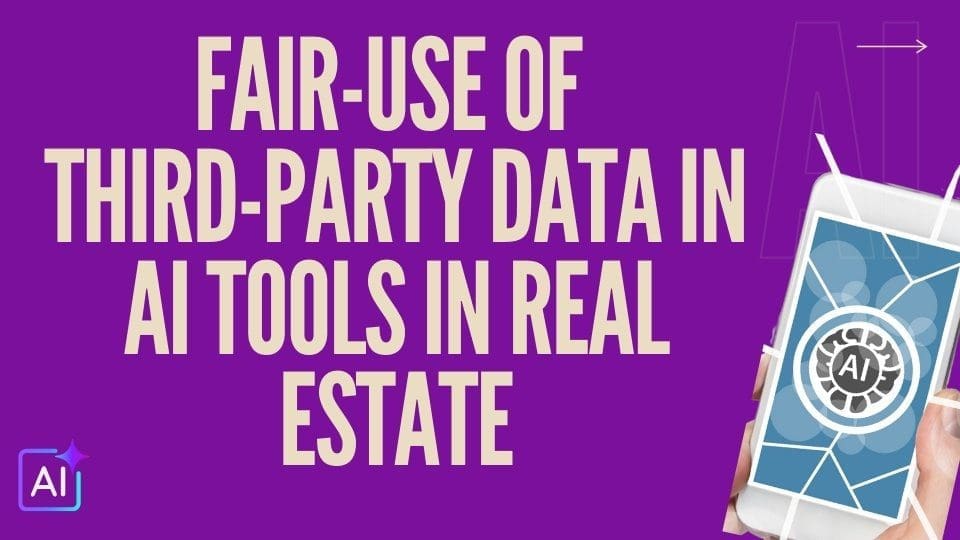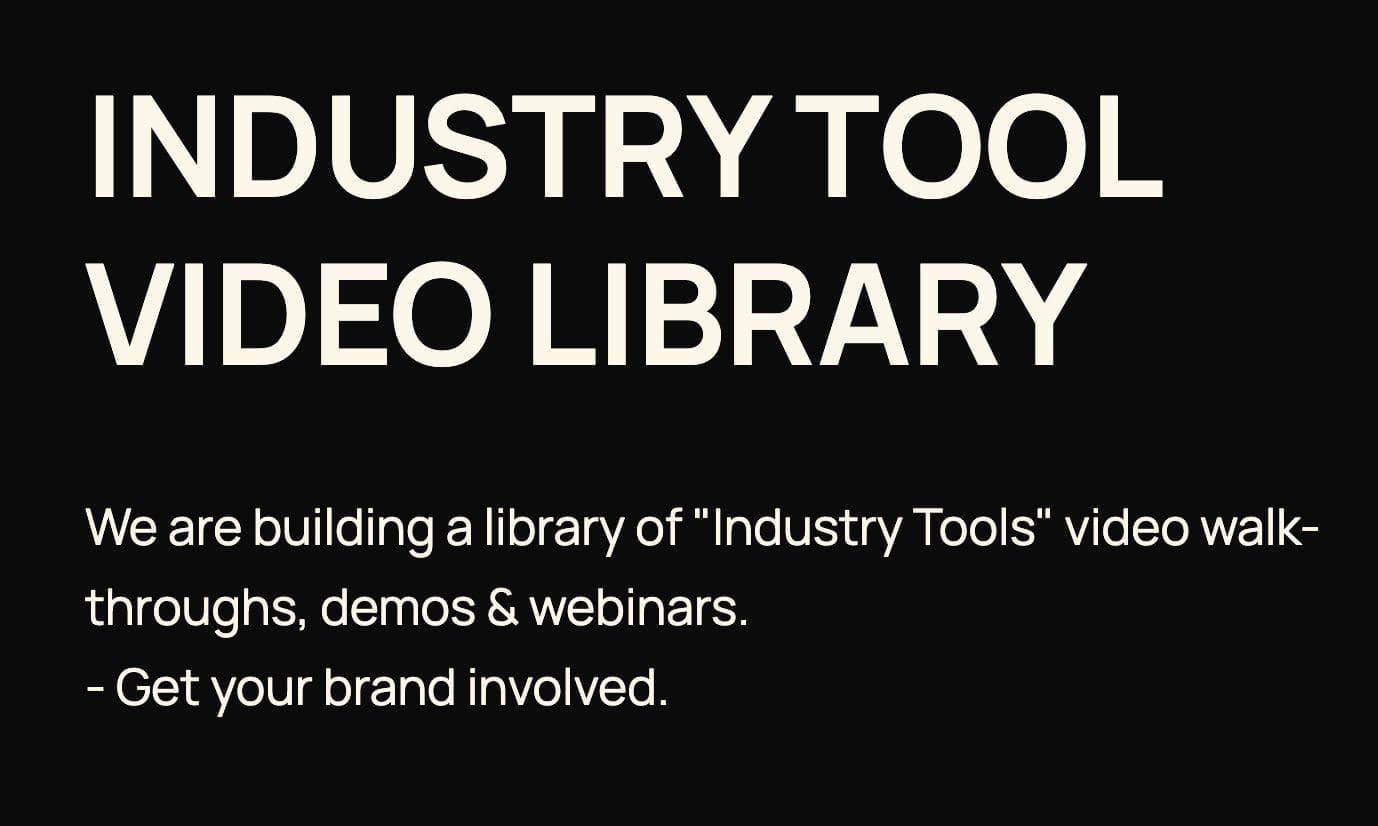AI Learning Centres:
- AI – Learn The Basics
- Get The Most From ChatGPT
- Branding in The Age of AI
- AI for Client Experience
- AI For Prospecting
- AI For Marketing
- AI For Listings & Ads
- Team Adoption of AI
- AI For PM
- AIO & Generative Search
- AI For Operations & Efficiency
- AI For Market Research & Analysis
- AI Ethics, Privacy & Compliance in Real Estate
Digital Marketing & Social Media Learning Centres:
Guides & Downloads

Fair-Use of Third-Party Data in AI Tools in Real Estate
Understanding “Fair-Use” vs “Fair-Dealing”
In the United States you often hear “fair-use”, but Australia runs on fair-dealing.
Fair-dealing lets you copy small parts of a work only for set purposes such as research, review or news reporting. Using large blocks of photos, floor-plans or text to power an AI tool that helps you win listings is outside those narrow purposes. (Copyright Office)
In short: if the information will save time or make money for your business, assume you need a licence or clear permission.
Why Third-Party Data Matters in Property AI
Every AI you use needs data to learn patterns. In real estate that data usually comes from:
Listing photos, copy and floor-plans on public portals
Market tables from CoreLogic, PropTrack or PriceFinder
Government datasets (sales, zoning, demographics)
Personal information from rental applications or CRMs
Getting the data wrong can lead to fines, lawsuits, and loss of client trust.
Key Legal Checkpoints
1. Copyright
Portal content. REA Group’s terms ban scraping or republishing any listing text, images or metrics to “build a property insights product”. (About realestate.com.au)
CoreLogic data. Subscription terms say you must not reproduce or adapt their reports without written consent. (CoreLogic)
Training AI. Copying whole images or descriptions for model-training rarely fits “research or study” because the volume used is far beyond a “reasonable portion”. (Legal Blogs)
2. Privacy
Property photos often show faces, car rego plates or children’s toys—each can be “personal information”. Before you feed images to an AI, get consent or blur / crop first, and store outputs securely. (OAIC)
3. Data-Sharing Law
If you plan to blend Commonwealth datasets (e.g. census tables) with your CRM, the Data Availability & Transparency Act 2022 says sharing must sit inside a registered data-sharing agreement that shows public-interest benefit. (Office of the National Data Commissioner)
4. Truth-in-Advertising Rules
New NSW legislation will make it illegal to publish AI-edited property images that hide flaws without disclosure, with fines up to $22,000 per breach. Similar rules are expected nationwide.
Practical Steps to Stay Compliant
Map Your Data Sources
Create a simple table of where each dataset comes from, who owns it, and your permission status.
Read (and file) the Licence
Never rely on “open access” claims alone. Store a PDF of every licence or API agreement with an expiry date and usage limits.
Use Official APIs—Not Scraping Bots
Portals like REA offer Partner APIs that let you pull metrics under clear terms. Scraping breaches the licence and can trigger an IP block or legal action. (partner.realestate.com.au)
De-Identify Personal Info Early
Strip names, emails and phone numbers before training an AI model. For images, crop faces or use a blur filter. The OAIC calls this a “reasonable step” to reduce privacy risk. (OAIC)
Attribute and Disclaim
Add a footnote such as “Market data © CoreLogic 2025, used under licence”. For AVMs, include the standard valuation disclaimer supplied by your provider.
Keep an Audit Trail
Log who accessed data, why, and what the AI produced. If a complaint lands, your audit trail proves you acted lawfully and fairly.
Safe Data Sources You Can Use Today
| Source | Why It’s Safe | Quick Tip |
|---|---|---|
| Government open datasets (ABS, state planning portals) | Provided under Creative Commons licences | Check for any “no-derivatives” clauses |
| Your own photos & floor-plans | You control the copyright | Add a simple model release if people appear |
| Vendor-supplied docs (with written consent) | Clear permission covers marketing & AI use | Store the consent email in your CRM |
| OpenStreetMap, Unsplash, Pexels | CC-BY or CC0 licences allow commercial AI training | Keep attribution metadata in case you need it |
What Happens If You Get It Wrong?
Copyright claims – photographers can demand removal plus damages.
Platform bans – portals can suspend your agency’s feed for scraping. (About realestate.com.au)
Privacy fines – under the planned NSW rules, undisclosed image edits or excessive data collection could cost tens of thousands of dollars.
Reputation loss – misleading AI-generated ads erode buyer trust overnight.
Quick Compliance Checklist for Your Next AI Project
Do we have written permission or a licence for every dataset?
Have we removed personal identifiers where possible?
Are we inside the scope of any fair-dealing exception? (Usually no for commercial tools.)
Is our use consistent with portal or API terms?
Have we logged data flows and stored licences?
Is the final output clearly labelled with sources and disclaimers?
Tick every box before you hit “deploy”.
Further Reading & Resources
OAIC – Privacy & AI Guidance (2024) (OAIC)
REA Group Terms of Use (updated 2025) (About realestate.com.au)
CoreLogic Property Data Terms (2025) (CoreLogic)
Data Availability & Transparency Act 2022 Guide (Office of the National Data Commissioner)
University of Melbourne – Fair-Dealing Factsheet (Copyright Office)
Use these links as your north-star whenever you’re feeding third-party data into an AI tool. Staying on the right side of the rules is easier—and far cheaper—than fixing a breach after it happens.






